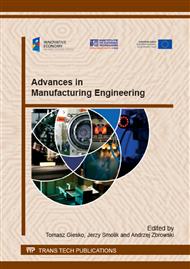p.3
p.11
p.19
p.27
p.35
p.46
p.54
p.62
The Concept of the System for Parameterization of Functionalized Membranes
Abstract:
Microbial biofilm formation on membrane surface layer (biofouling) impedes filtration processes through increased material-and energy consumption and causes the risk of contamination by microorganisms and their metabolites. Due to the constantly growing resistance of microorganisms to the commonly used methods of prevention, it is necessary to develop functionalised materials and coatings of stable, non-specific, and effective antimicrobial properties. The integral step in the process of the development of such materials and coatings is universal and reliable testing under process conditions. The intensity of biological fouling is proportional to the microbial cell concentration in the system. Potentially present organisms are systematically varied and may include bacteria, fungi, and microscopic plants. The most convenient and universal method for microbial cell concentration assessment features the measurement of optical density of the liquid. Moreover, biofilm formation is dependent on the physiochemical factors, such as temperature, the chemical composition of feed liquid, membrane material, process flows, and pressures, etc. Additionally, process conditions may affect the activity of the functionalised material used for membrane formation. For this purpose, an integrated approach for multiparameteric assessment is needed, taking into account the measurements of the above listed parameters and allowing for comparisons. The proposed modular test stand includes a number of actuators and measurement sensors, which enable the following control functions: the control over the process fluid flow, the control over the emission on the test object of electromagnetic radiation in the required spectrum, and implementation of the optical density measurements of the fluid. The whole installation test is placed in one closed cubature of controlled thermal conditions. The control system allows the recording and archiving of process data, which are collected (on-line) by a PLC and transferred to a PC via Ethernet interface. Dedicated software application on the PC provides a preliminary analysis and allows remote monitoring via a web browser. Remote access to measurement data can also be used for the creation of a network of series of such test stands, in which different aspects of the studied phenomenon are simultaneously analysed and controlled as the modules of a network control system (NCS). The described system will allow the multiparameteric, universal and reliable assessment of antimicrobial properties of functionalised membranes under process conditions. The modular character of the proposed approach will be fully reconfigurable and adaptive for a wide range of membrane types. The results to be obtained will support the process of sustainable membrane development.
Info:
Periodical:
Pages:
3-10
Citation:
Online since:
November 2014
Authors:
Price:
Сopyright:
© 2015 Trans Tech Publications Ltd. All Rights Reserved
Share:
Citation:



